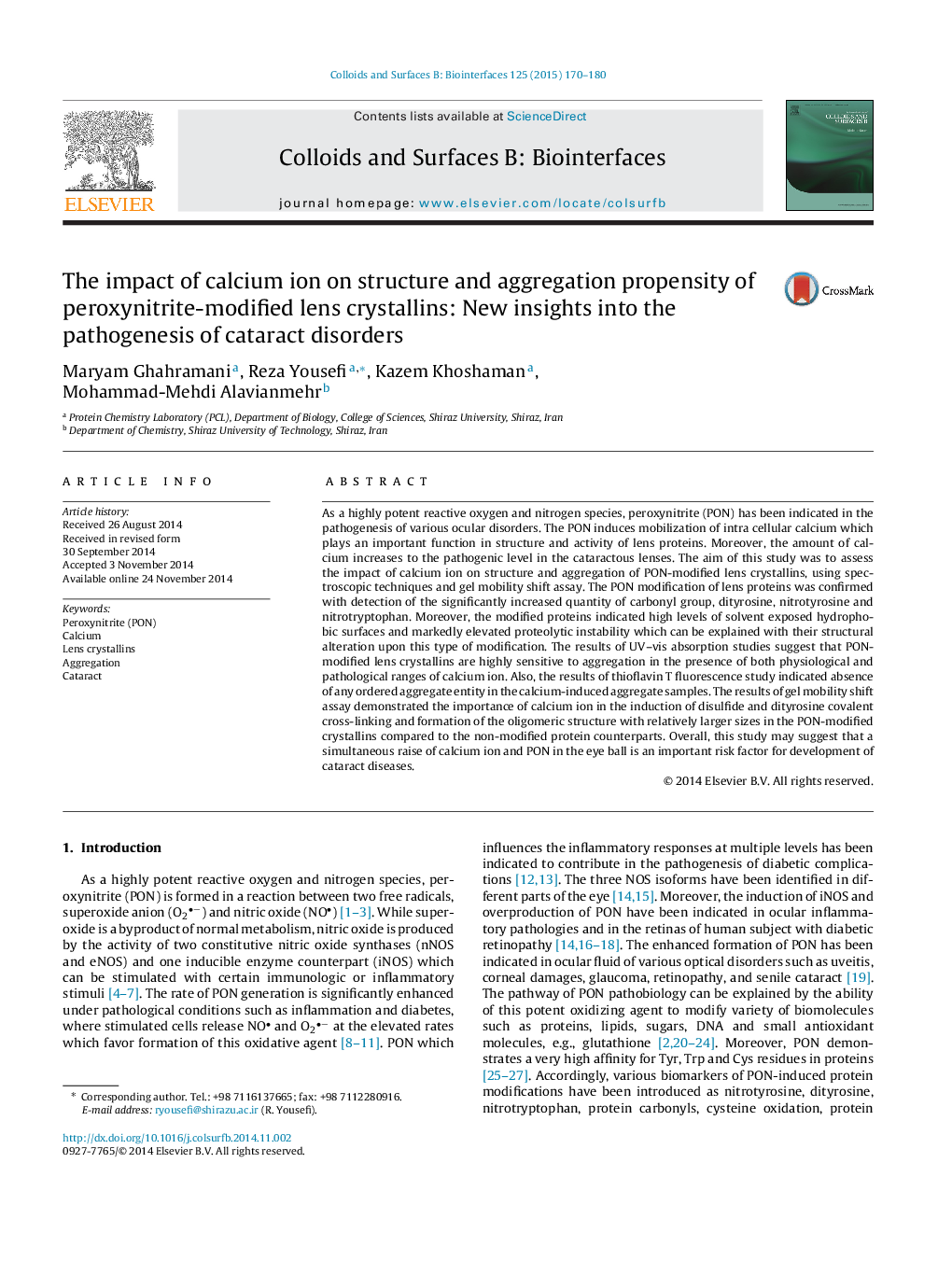| Article ID | Journal | Published Year | Pages | File Type |
|---|---|---|---|---|
| 599581 | Colloids and Surfaces B: Biointerfaces | 2015 | 11 Pages |
•Peroxynitrite (PON) has been indicated in pathogenesis of various ocular disorders.•PON is known to induce mobilization of intra cellular calcium level.•Lens proteins were modified in the presence of PON.•PON-modified lens proteins indicate increased sensitivity to calcium-induced aggregation.•The simultaneous raise of calcium and PON in eye ball is likely a risk factor in development of cataract diseases.
As a highly potent reactive oxygen and nitrogen species, peroxynitrite (PON) has been indicated in the pathogenesis of various ocular disorders. The PON induces mobilization of intra cellular calcium which plays an important function in structure and activity of lens proteins. Moreover, the amount of calcium increases to the pathogenic level in the cataractous lenses. The aim of this study was to assess the impact of calcium ion on structure and aggregation of PON-modified lens crystallins, using spectroscopic techniques and gel mobility shift assay. The PON modification of lens proteins was confirmed with detection of the significantly increased quantity of carbonyl group, dityrosine, nitrotyrosine and nitrotryptophan. Moreover, the modified proteins indicated high levels of solvent exposed hydrophobic surfaces and markedly elevated proteolytic instability which can be explained with their structural alteration upon this type of modification. The results of UV–vis absorption studies suggest that PON-modified lens crystallins are highly sensitive to aggregation in the presence of both physiological and pathological ranges of calcium ion. Also, the results of thioflavin T fluorescence study indicated absence of any ordered aggregate entity in the calcium-induced aggregate samples. The results of gel mobility shift assay demonstrated the importance of calcium ion in the induction of disulfide and dityrosine covalent cross-linking and formation of the oligomeric structure with relatively larger sizes in the PON-modified crystallins compared to the non-modified protein counterparts. Overall, this study may suggest that a simultaneous raise of calcium ion and PON in the eye ball is an important risk factor for development of cataract diseases.
Graphical abstractFigure optionsDownload full-size imageDownload as PowerPoint slide
